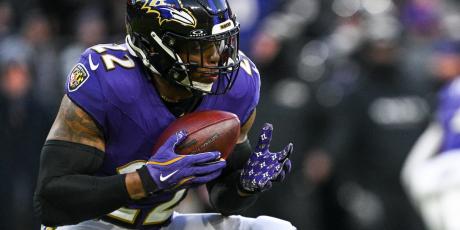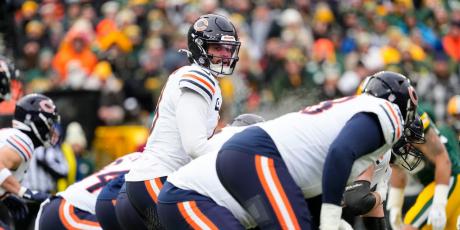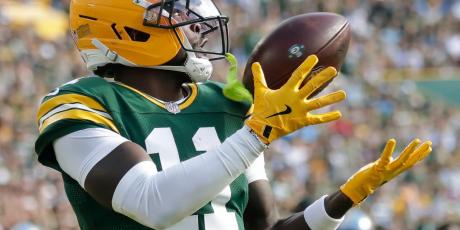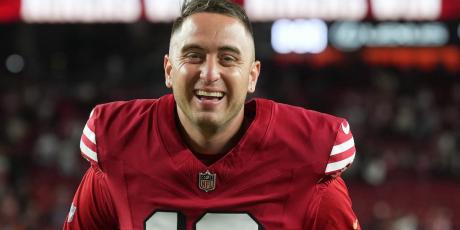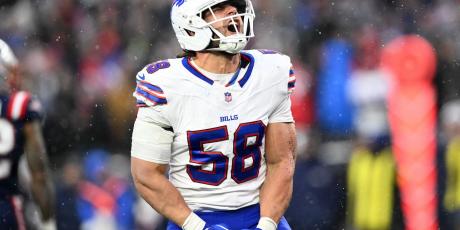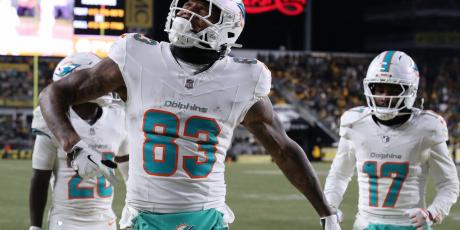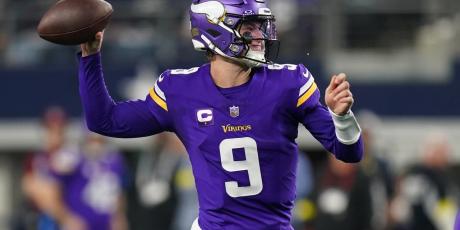2020 Offensive Line Rankings: 21-11
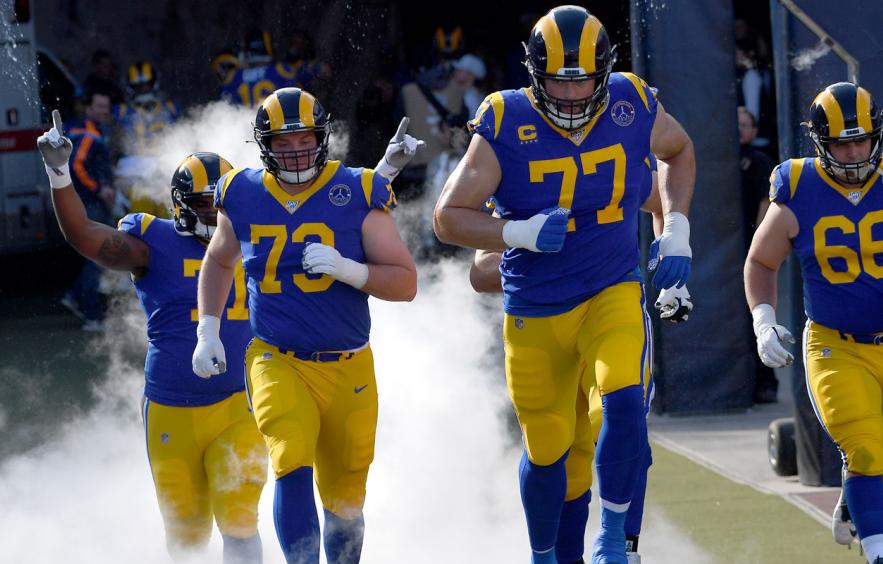
As I’m sure you have hypothesized in the past, the play of a team’s offensive line impacts the fantasy points that each NFL team can produce, and now we have statistical proof. By using the knowledge of good and bad units, we can better attack (or avoid) skill position players on a given team; another edge we can use against our teammates. With that caveat understood, it’s time to figure out exactly where a team’s offensive line compares to the rest of the league.
More Offensive Line Rankings: 32-22 | 10-1
Below I’ll be counting down the middle-11 offensive lines heading into the 2020 season, with an accompanying “key stat” from last year’s unit and new faces coming to the team. Additions will denote either the most recent team that player played for, or the round of the draft they were selected. Additions and subtractions will be relegated to players believed to be immediately starting or at the least an immediate back-up. Let’s dig in.
21. Denver Broncos
Key 2019 Stat: 195 game starts of Experience (30th)
Offseason Movement
Additions: OG Graham Glasgow (Lions), OC Lloyd Cushenberry (third-round)
Subtractions: OG Ronald Leary, OC Connor McGovern
Either Connor McGovern had a flash-in-the-pan third season or the Broncos let an up-and-coming star at the center position go, just to be replaced by a third-round “what if?”. In 2019, McGovern had to start next to three different guards in his third straight season playing for a different offensive line coach/offensive coordinator pairing. In his first year playing center full time he developed a much better anchor, continued stalemating larger interior defensive linemen to clear lanes in the running game, and exhibited good mental processing to identify blitzing defenders for his offense and quarterback in the passing game. But I guess this write-up shouldn’t be about what has been.
Denver brought on Graham Glasgow from the Lions and Lloyd Cushenberry in the third-round to lessen the blow of McGovern’s loss, the two of which will double-team the former Bronco’s versatility. With Ron Leary still floating around in free agency, Glasgow —a solid piece in both the run and pass game— will slide right into the right guard position, while Cushenberry is slated to start at center from day one.
Protecting Joe Burrow’s greatest college season of all time is nothing to sneeze at, and the LSU line won the Joe Moore Award in 2019 (best offensive line unit) with Cushenberry at center. With 100-percentile reach for a center, Cushenberry has all the length you could want but will need some time to work on strike placement and finishing his blocks once he reaches the second level of the defense.
9/1/2020 Update: The Broncos have dropped a couple of spots because of starting right tackle Ja'Wuan James' holdout of the 2020 season. Though he played only 63 snaps in 2019, it was believed that he had returned to full health to start proving his worthiness of his recent four-year, $51 million contract.
20. Detroit Lions
Key 2019 Stat: 2.61% Blown Block % (24th)
Offseason Movement
Additions: OT Halapoulivaati Vaitai (Eagles), OG Jonah Jackson (third-round)
Subtractions: OG Graham Glasgow, OT Ricky Wagner
Though Halapoulivaati Vaitai has been a swing tackle for most of his four-year career, he has performed admirably for the Eagles despite making spot starts on both sides of the line. He will make for a decent-to-good one-for-one with the departure of Rick Wagner. The tandem of Oday Aboushi and/or rookie Jonah Jackson filling-in for Graham Glasgow at right guard is a different story. Aboushi is the exact definition of a journeyman back-up. He’s played for five teams in his six-year career and set a career-high in snaps back in 2014 with the Jets; seeing the field 722 times as a fifth-round rookie.
Jonah Jackson transferred within the Big Ten from Rutgers to Ohio State for his final college season, registering 14 starts against top-level competition which helped his draft stock. He has a paved road to the starting job but needs to clean up some technical issues before he can be a consistent starting-level contributor. The Lions were already having issues getting the run game going towards the inside of the line last season (Kerryon Johnson’s 3.5 yards per carry ranked 27th/34 qualifying running backs), so Jackson will need to get his pads lower and work on hand placement before he’s a net-positive for the offense.
Taylor Decker has really come into his own as a great left tackle, and Frank Ragnow isn’t far behind at center, but because of the hodgepodge that makes up the right side of the line, Detroit is toeing the line (pardon the pun) with the bottom-third of these rankings.
Former Buckeye Jonah Jackson (LG #73) was a good pick for Detroit. He fills a need and arguably should have come off the board sooner.
🌰Good body control and vision in pass pro
🌰Good lateral quickness to reach
🌰Good timing, speed, and angles to second level in zone
🌰Finisher pic.twitter.com/GTpUdYB4aO— Bryce Rossler (@btrossler) April 29, 2020
19. Chicago Bears
Key 2019 Stat: 3.86 Adjusted Line Yards (29th)
Offseason Movement
Additions: OL Germain Ifedi (Seahawks), OL Coach Juan Castillo
Subtractions: N/A
Germain Ifedi, who hasn’t taken consistent snaps at guard since 2016, is slated to fill the right guard spot as we head into 2020. At 6’5”, 325-pounds, Ifedi has great size for a guard, and a move inside may help mask his inability to contain outside speed rushers, which have given him problems his entire career. Even in 2019 —his fourth year in the league— Ifedi keeps his hands too wide after the snap, leaving him unable to get his hands into the chest and control outside rushers. This results in a) him getting beat. and/or b) getting flagged for holding calls as he desperately wraps an arm around a Nick Bosa or Chandler Jones. Over the last three seasons, Ifedi has had the fifth, sixth, and first-most penalties (amongst offensive linemen) called against him, effectively killing drives because the game moves too fast for him on the outside. For Chicago’s sake, let’s hope it’s just a long learning curve.
Charles Leno, James Daniels, and Cody Whitehair have been gelling for three seasons now, and they will be tasked with protecting Mitchell Trubisky’s (Nick Foles’?) blindside. After a trial run of moving James Daniels back to his college position of center provided less-than-stellar results, it looks as if that idea has been scrapped with Whitehair starting the year at center where he is more comfortable.
18. Kansas City Chiefs
Key 2019 Stat: 4.9% Adjusted Sack Rate (4th)
Offseason Movement
Additions: OT Lucas Niang (third-round), OT Mike Remmers (Giants)
Subtractions: OT Cam Erving
The Super Bowl Champion Kansas City Chiefs will return all five of its starters for a unit that finished the season with the fourth-lowest adjusted sack rate. The line performed with relative mediocrity while looking across the rest of the o-line stat database, and that’s why they find themselves near the middle of the pack here. An Eric Fisher ankle injury in the front part of the season forced Cam Erving into enough starts that I’m sure made the Chiefs coaching staff uncomfortable. Signing Mike Remmers and releasing Cam Erving is an instant upgrade to depth all along the line; Remmers has logged meaningful snaps at every position except center over his eight-year career. If the only depth that is tested in 2020 is Mike Remmers, this unit could hopscotch quite a few teams as the season goes on.
Selecting Lucas Niang in the third-round brings some much-needed youth to the unit and gives them an option for the future with so much of their line hovering at or past the 30-year mark. Niang was only able to play four games in 2019 and is to blame for his lowered draft capital. The Chiefs can allow him to “redshirt” his rookie year while he refines problems with his footwork and body control.
LUCAS NIANG the RT Tackle is well known as one of the nations best pass blockers. But tonight, his run blocking really impressed me. He had several blocks like this one. He’s fun to watch. pic.twitter.com/cY949dfUTt
— Paul Alexander (@CoachPaulAlex) September 15, 2019
17. Philadelphia Eagles
Key 2019 Stat: 550 game starts of Experience (1st)
Offseason Movement
Additions: N/A
Subtractions: OT Jason Peters, OT Halapoulivaati Vaitai
This feels dirty, but I don’t think people understand what losing Brandon Brooks means to this line. Especially in the first season post-Jason Peters (more on that later) and Halapoulivaati Vaitai, the latter of which has taken snaps all across the line to fill in for an oft-injured unit during his four years with the team.
Barring a significant trade, 2018’s sixth-rounder Matt Pryor is the most likely candidate to take Brooks’ place. Pryor is a huge 6’7” guard, who is unfairly an immediate downgrade in pass protection because Brandon Brooks is one of the best pass protecting guards in the league. That 6’7” height is literally in the 100-percentile of guards, and a big reason for that is because it’s so difficult to get leverage on these stocky, strong interior defensive linemen when your pads are so naturally high. Pryor has been accused of being heavy-footed —which is precisely why he needed to move inside from the tackle position after being drafted— and is going to have some problems against speedy interior linemen, an area in which Brandon Brooks has excelled.
There are rumors (mostly from Eagles fans who rightfully love the player) that Philadelphia could be bringing back Jason Peters, who is still a free agent. First of all —and most importantly— Jason Peters has never played guard in his 16-year career, the area where help is desperately needed. There’s no reason to stifle the continued growth of former first-rounder Andre Dillard by bringing Peters to start at left tackle, particularly with the 38-year-old missing 12 regular-season games over the last three seasons.
Lane Johnson is a great right tackle (but has also been dealing with an injury history). Jason Kelce is amazing. But sadly, no matter what happens between now and Week 1, the Philadelphia Eagles no longer have an elite offensive line.
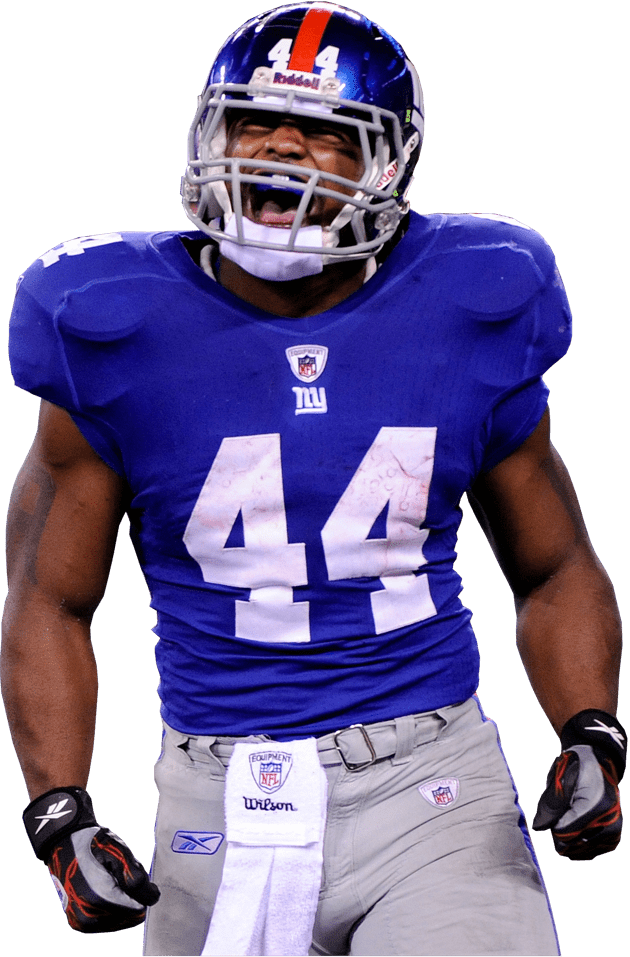
- All Premium Content
- The most Accurate Rankings Since 2010
- Expert Draft Picks w/DraftHero
- Highest Scoring Lineup + Top Available Players w/LeagueSync
- ...and much much more

